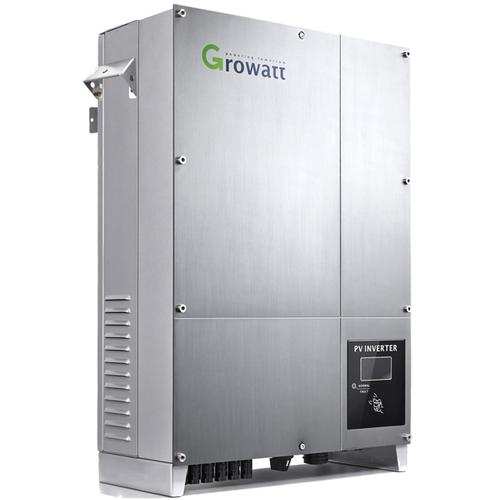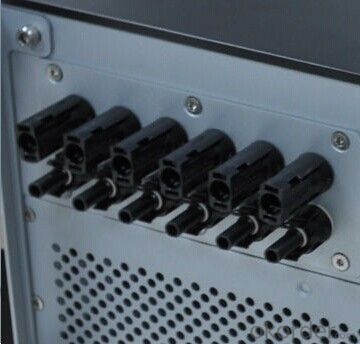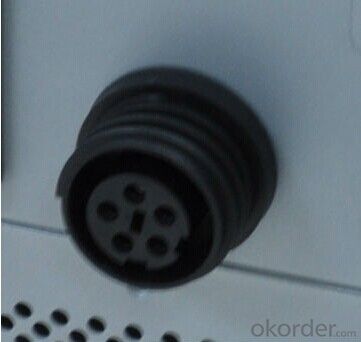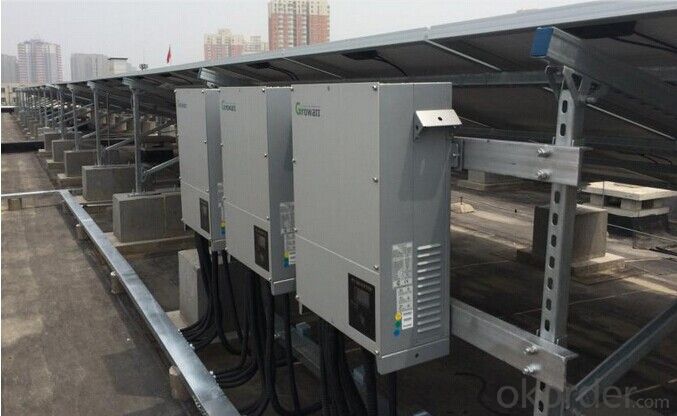Three Phase String Solar Inverter 10000w-20000w
- Loading Port:
- Shekou
- Payment Terms:
- TT or LC
- Min Order Qty:
- 5 pc
- Supply Capability:
- 10000 pc/month
OKorder Service Pledge
OKorder Financial Service
You Might Also Like
Three Phase String Solar inverter 10000w-20000w
DC input voltage up to 1000V
Maximum efficiency of 98%
Internal DC switch
Transformerless
Compact design
Multi MPP controller
MTL-string
Bluetooth/ RF technology/ Zigbee/ Wi-Fi
Sound control
Easy installation
Specifications
Maximum efficiency of 98%
Multi MPP controller
MTL String
Bluetooth technology&Sound control
Comprehensive Growatt warranty
10000UE 12000UE 18000UE 20000UE
General Descriptions
> DC input voltage of up to 1000 V
> Maximum efficiency of 98 %
> Internal DC Switch
> Transformerless
> Compact design
> Muti MPP controller
> MTL-String
> Bluetooth Technology
> Easy installation
> Sound control
> Comprehensive Growatt warranty program
Europe ENS
> Simple national setting of line supply monitoring(ENS)
> Easy country configuration
> Muti-language display
> Currently available for Germany France UK Austria Switzerland Italy and Spain
Communications
> RS485 /GPRS interfaces
> Computer monitoring software
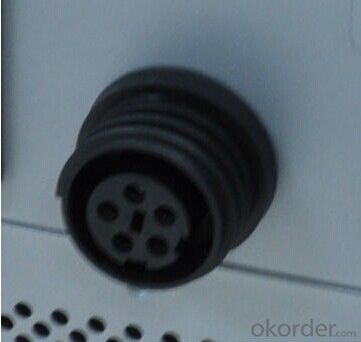
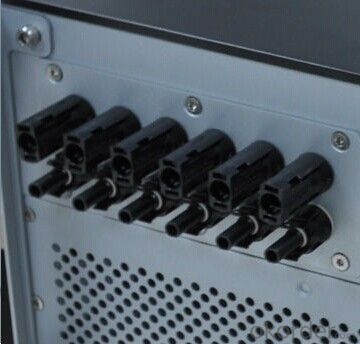
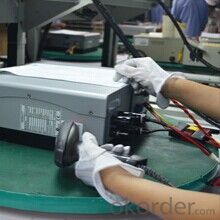
FAQ
1. Have any design tool and how to use it?
Shine Design is the system design software just for inverters, It can conduct installers to figure out panel numbers for a system, panel numbers for each string, and which inverter model is suitable for the system. Moreover, it can print a design report after input all necessary parameters, can calculate DC/AC wire wastage, annual generation, etc.
2. Does the inverter have monitoring solutions for residential system?
For small rating system, we have wired two monitoring solution (ShineNet via RS232 or RS485). (a) Local wireless monitoring solution (ShineVision via RF module communication) (b) Global wireless monitoring solution (WIFI module via WIFI network)
3. Do you have free solution for monitoring?
ShineNet is an inverter monitoring software run in Windows XP, Windows Vista, Windows 7 operating system. It can monitor inverter via RS232 (or RS232 convert to USB cable) and RS485 wire connection. Customers can purchase the cable locally to get the inverter monitored, it is simple.
- Q: Can a solar inverter be used with different types of tracking systems?
- Yes, a solar inverter can be used with different types of tracking systems. The function of a solar inverter is to convert the DC (direct current) generated by the solar panels into AC (alternating current) that can be used to power electrical devices. As long as the tracking system is capable of generating DC power from the solar panels, the solar inverter can be used to convert it into usable AC power.
- Q: What is the role of reactive power control in a solar inverter?
- The role of reactive power control in a solar inverter is to manage and optimize the flow of reactive power between the solar PV system and the grid. This control allows the inverter to regulate the power factor, which is the ratio of real power to apparent power, ensuring that the system operates efficiently and in compliance with grid requirements. By adjusting the reactive power output, the inverter can compensate for voltage fluctuations and stabilize the grid, improving the overall performance and reliability of the solar power generation system.
- Q: Can a solar inverter be used with dual MPPT inputs?
- Yes, a solar inverter can be used with dual MPPT inputs. Dual MPPT (Maximum Power Point Tracking) inputs allow the inverter to optimize the power output from two separate solar arrays or strings, thereby increasing overall energy efficiency and system performance.
- Q: How do you monitor the performance of a solar inverter?
- One way to monitor the performance of a solar inverter is by using a monitoring system or software specifically designed for this purpose. These systems typically collect data from the inverter, such as energy production, voltage levels, and operating parameters, and provide real-time analytics and reports. By regularly reviewing this information, any anomalies or issues can be quickly identified and addressed, ensuring the optimal performance of the solar inverter.
- Q: Can a solar inverter be used with solar-powered agricultural equipment?
- Yes, a solar inverter can be used with solar-powered agricultural equipment. A solar inverter is an essential component that converts the direct current (DC) produced by solar panels into alternating current (AC) that can be used to power various electrical devices and machinery, including agricultural equipment. By integrating a solar inverter, solar energy generated by the panels can be efficiently utilized to operate and power agricultural tools and machinery, making it a sustainable and cost-effective solution for farmers.
- Q: How does a solar inverter handle sudden changes in solar irradiation?
- A solar inverter handles sudden changes in solar irradiation by continuously monitoring the incoming solar energy and adjusting its output accordingly. When there is a sudden increase in solar irradiation, the inverter quickly ramps up its power conversion to match the higher energy input. Similarly, when there is a sudden decrease in solar irradiation, the inverter reduces its power conversion to align with the lower energy input. This dynamic response ensures that the inverter efficiently converts the available solar energy into usable electricity, maintaining a stable power output despite fluctuations in solar irradiation.
- Q: How does a solar inverter synchronize with the electrical grid?
- A solar inverter synchronizes with the electrical grid by constantly monitoring the voltage and frequency of the grid. It adjusts its own output voltage and frequency to match the grid's, ensuring that the electricity generated by the solar panels is in phase and synchronized with the grid. This synchronization allows the solar power to be seamlessly integrated into the grid, enabling efficient power transfer and preventing any disruption to the supply.
- Q: Are there any government incentives or rebates available for solar inverters?
- Yes, there are government incentives and rebates available for solar inverters. These incentives and rebates vary by country and region. For example, in the United States, the federal government offers a tax credit called the Investment Tax Credit (ITC) that allows homeowners and businesses to deduct a percentage of the cost of a solar system, including inverters, from their taxes. Additionally, some states and local governments may offer their own incentives or rebates for solar inverters. It is recommended to check with local authorities or consult with a solar installer to determine the specific incentives and rebates available in a particular area.
- Q: Can a solar inverter be used in a solar water pumping system?
- Yes, a solar inverter can be used in a solar water pumping system. The inverter is responsible for converting the direct current (DC) generated by the solar panels into alternating current (AC) required to power the water pump. This allows for efficient and reliable operation of the pumping system using solar energy.
- Q: What is the role of a solar inverter in preventing overloading?
- The role of a solar inverter in preventing overloading is to monitor the flow of electricity from the solar panels and regulate the amount of power being generated and fed into the electrical grid. It ensures that the solar system operates within its capacity and prevents excessive power generation that could lead to overloading and potential damage to the system or the electrical grid.
Send your message to us
Three Phase String Solar Inverter 10000w-20000w
- Loading Port:
- Shekou
- Payment Terms:
- TT or LC
- Min Order Qty:
- 5 pc
- Supply Capability:
- 10000 pc/month
OKorder Service Pledge
OKorder Financial Service
Similar products
Hot products
Hot Searches
Related keywords





